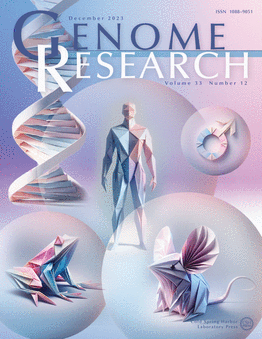Timescale and genetic linkage explain the variable impact of defense systems on horizontal gene transfer
IF 6.2
2区 生物学
Q1 BIOCHEMISTRY & MOLECULAR BIOLOGY
引用次数: 0
Abstract
Prokaryotes have evolved a wide repertoire of defense systems to prevent invasion by mobile genetic elements (MGE). However, because MGE are vehicles for the exchange of beneficial accessory genes, defense systems could consequently impede rapid adaptation in microbial populations. Here, we study how defense systems impact horizontal gene transfer (HGT) in the short and long terms. By combining comparative genomics and phylogeny-aware statistical methods, we quantified the association between the presence of 7 widespread defense systems and the abundance of MGE in the genomes of 196 bacterial and 1 archaeal species. We also calculated the differences in the rates of gene gain and loss between lineages that possess and lack each defense system. Our results show that the impact of defense systems on HGT is highly taxon- and system-dependent, and in most cases not statistically significant. Timescale analysis reveals that defense systems must persist in a lineage for a relatively long time to exert an appreciable negative impact on HGT. In contrast, for shorter evolutionary timescales, frequent co-acquisition of MGE and defense systems results in a net positive association of the latter with HGT. Given the high turnover rates experienced by defense systems, we propose that the inhibitory effect of most defense systems on HGT is masked by their strong linkage with MGE. These findings help explain the contradictory conclusions of previous research by pointing at mobility and within-host retention times as key factors that determine the impact of defense systems on genome plasticity.时间尺度和遗传连锁解释了防御系统对水平基因转移的可变影响
原核生物已经进化出广泛的防御系统来防止移动遗传元件(MGE)的入侵。然而,由于MGE是交换有益附属基因的载体,防御系统可能因此阻碍微生物种群的快速适应。在这里,我们研究防御系统如何影响水平基因转移(HGT)在短期和长期。通过比较基因组学和系统发育意识统计方法的结合,我们量化了196种细菌和1种古细菌基因组中7种广泛存在的防御系统与MGE丰度之间的关系。我们还计算了拥有和缺乏每种防御系统的世系之间基因获得和丢失率的差异。研究结果表明,防御系统对HGT的影响是高度依赖于分类群和系统的,在大多数情况下不具有统计学意义。时间尺度分析表明,防御系统必须在一个谱系中持续相对较长的时间才能对HGT产生明显的负面影响。相比之下,对于较短的进化时间尺度,MGE和防御系统的频繁共同获取导致后者与HGT的净正相关。鉴于防御系统的高流失率,我们认为大多数防御系统对HGT的抑制作用被它们与MGE的强联系所掩盖。这些发现有助于解释先前研究的矛盾结论,指出流动性和宿主内保留时间是决定防御系统对基因组可塑性影响的关键因素。
本文章由计算机程序翻译,如有差异,请以英文原文为准。
求助全文
约1分钟内获得全文
求助全文
来源期刊

Genome research
生物-生化与分子生物学
CiteScore
12.40
自引率
1.40%
发文量
140
审稿时长
6 months
期刊介绍:
Launched in 1995, Genome Research is an international, continuously published, peer-reviewed journal that focuses on research that provides novel insights into the genome biology of all organisms, including advances in genomic medicine.
Among the topics considered by the journal are genome structure and function, comparative genomics, molecular evolution, genome-scale quantitative and population genetics, proteomics, epigenomics, and systems biology. The journal also features exciting gene discoveries and reports of cutting-edge computational biology and high-throughput methodologies.
New data in these areas are published as research papers, or methods and resource reports that provide novel information on technologies or tools that will be of interest to a broad readership. Complete data sets are presented electronically on the journal''s web site where appropriate. The journal also provides Reviews, Perspectives, and Insight/Outlook articles, which present commentary on the latest advances published both here and elsewhere, placing such progress in its broader biological context.
 求助内容:
求助内容: 应助结果提醒方式:
应助结果提醒方式:


